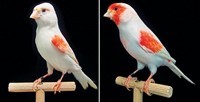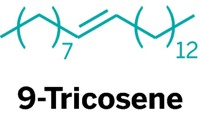Advertisement
Grab your lab coat. Let's get started
Welcome!
Welcome!
Create an account below to get 6 C&EN articles per month, receive newsletters and more - all free.
It seems this is your first time logging in online. Please enter the following information to continue.
As an ACS member you automatically get access to this site. All we need is few more details to create your reading experience.
Not you? Sign in with a different account.
Not you? Sign in with a different account.
ERROR 1
ERROR 1
ERROR 2
ERROR 2
ERROR 2
ERROR 2
ERROR 2
Password and Confirm password must match.
If you have an ACS member number, please enter it here so we can link this account to your membership. (optional)
ERROR 2
ACS values your privacy. By submitting your information, you are gaining access to C&EN and subscribing to our weekly newsletter. We use the information you provide to make your reading experience better, and we will never sell your data to third party members.
Biological Chemistry
Boldest Honeybees Have Bold Brains
Genomic analysis shows the molecular basis of risk-taking behavior extends to bees
by Elizabeth K. Wilson
March 12, 2012
| A version of this story appeared in
Volume 90, Issue 11
The boldest foraging honeybees in the hive have dramatically different brain chemistries than their more timid counterparts, according to Gene E. Robinson and Zhengzheng S. Liang of the University of Illinois, Urbana-Champaign, and colleagues. In addition, these researchers found that thrill-seeking bees can be rendered less so, and that timid bees can be compelled to become risk takers, by administering doses of various biomolecules (Science, DOI: 10.1126/science.1213962). The team performed whole-genome-sequencing analyses of two groups of foraging bees: those that engaged in novelty-seeking behavior, such as scouting independently for food and new hive locations, and those that did not. The team observed that the gene activity in the thriller bees differs from the others, affecting biochemical pathways involving catecholamine, glutamate, and γ-aminobutyric acid signaling. All of these molecules are implicated in similar bold behaviors in vertebrates, they note. When the meek bees were treated with glutamate and octopamine, their risk-taking behavior increased. And the bold bees’ behavior settled down when dopamine signaling was blocked in their brains. “It looks like the same molecular pathways have been engaged repeatedly in evolution to give rise to individual differences in novelty seeking,” Robinson says.





Join the conversation
Contact the reporter
Submit a Letter to the Editor for publication
Engage with us on Twitter